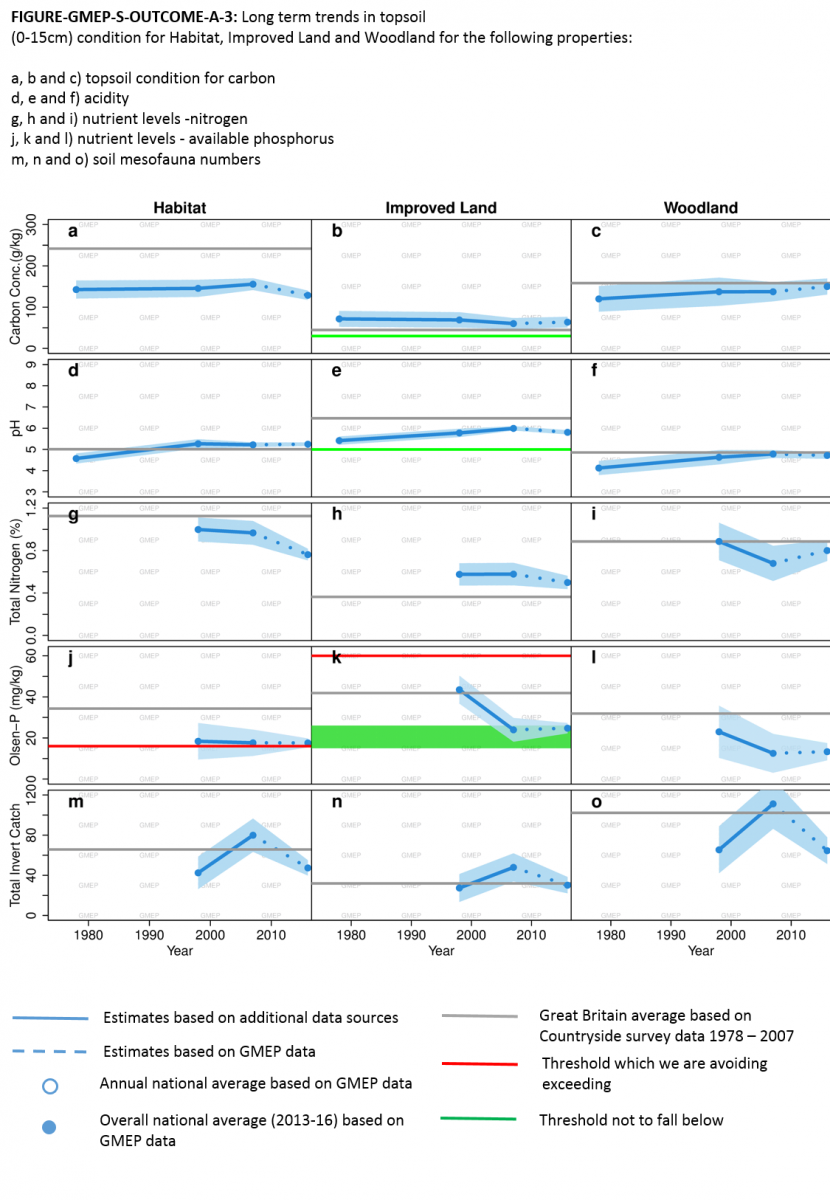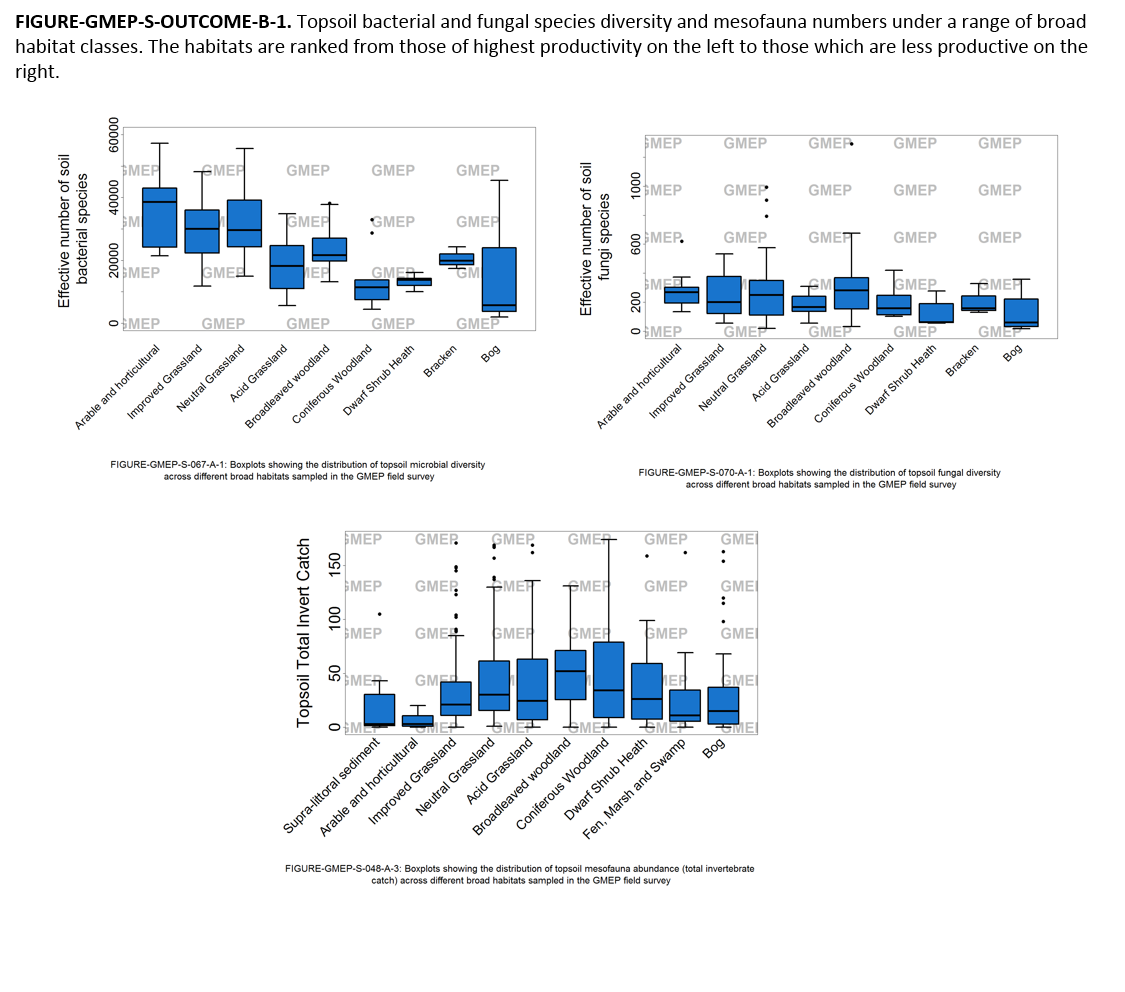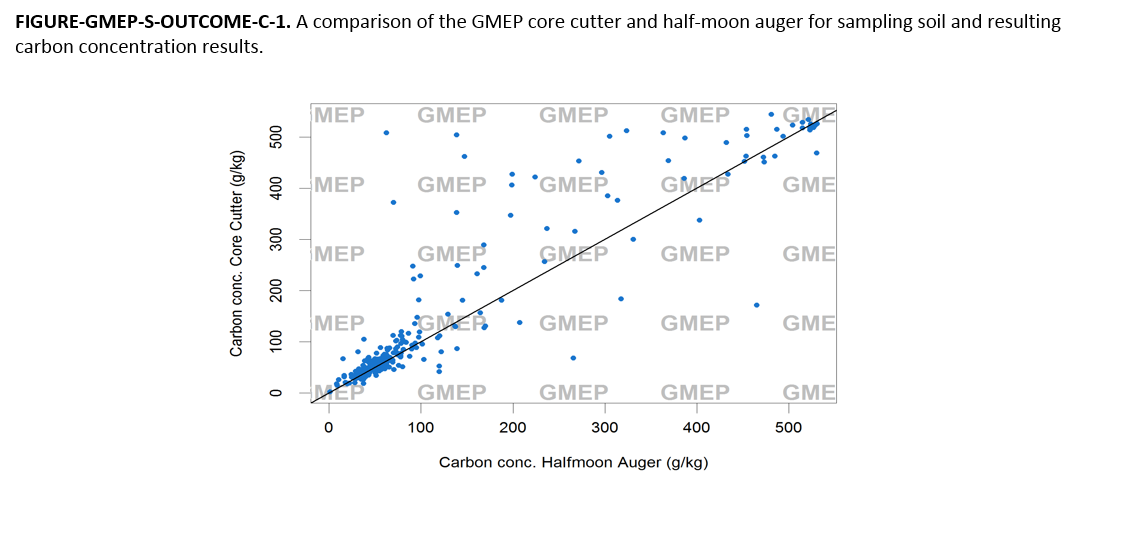Available Translations:
Summary of GMEP results by Glastir Outcome
A wide range of results are now available from the GMEP project. These provide evidence of ongoing changes in Wales' Natural Resources. A subset of results has been agreed with the Welsh Government and the GMEP Advisory Group as high level indicators for the 6 Outcomes of the Glastir Scheme and are reported here. The six outcomes are:
- Combating climate change
- Improving water quality and managing water resources
- Improving soil quality and management
- Maintaining and enhancing biodiversity
- Managing landscapes and historic environment and improving public access to the countryside
- Woodland creation and management
GMEP activities have included; a national rolling field survey of 300 1km squares with an equal split of land in and out of scheme; new analyses of long term data from other monitoring programmes; development of new indicators; modelling to explore potential future outcomes; surveys to assess wider socio-economic benefits; and exploitation and development of novel technologies.
These indicators are included in the Headline Results below to give a broad summary of the significant findings of GMEP as either 'positive outcomes' or 'areas of concern or a need for further action'.
Headline Results: Glastir Impacts
GMEP was tasked with providing a baseline for assessing the future impacts of Glastir. Future field surveys will provide the main evidence for actual change in the six original intended Outcomes. To provide an early insight into likely future impacts on the six original Outcomes intended for Glastir, we exploited a set of models and accounting tools to project the likely impacts of management interventions for soil, water, biodiversity, climate change and woodlands.
Improving soil quality and management
Positive Outcomes: Glastir Impacts
In scheme farms had the following improvements relative to non-scheme farms:
10% increase in the likelihood of calibrating fertiliser spreaders (from 62% to 72%).
10% increase in the likelihood of carrying out soil nutrient testing (from 51% to 61%).
15% more likely to have left stubble in fields to provide over-winter cover (from 44% to 59%).
9.4% decrease in the use of phosphate fertiliser on grassland fields.
6% reduction in breeding ewe numbers for farms in the Advanced level.
Areas for concern or further action needed: Glastir Impacts
- None specified for now. Base line data are available for future assessments of Glastir impacts.
Detailed findings: Glastir impacts
For more detail on data and findings related to Glastir impacts, visit the Resources page and download the GMEP Final Report or the GMEP Final Report Executive Summary.
Headline Results: National Trends
The GMEP 'Wider Wales' structured rolling field survey provides the control population for assessing future changes resulting from Glastir. One benefit of the structured sampling of the countryside used in this Wider Wales survey is that this control population also provides an unbiased national assessment of stock and condition of common habitats and species including woodland, soils, small streams and ponds. GMEP results can be linked to past trends to put the current observations into context.
Improving soil quality and management
Positive Outcomes: National Trends
There has been a general improvement in Welsh farm practices between 2009 and 2016 concerning soil management practices that were relatively simple to implement and involved a low capital cost, such as soil nutrient testing. Increase in specific soil management actions was particularly observed for dairy farms on grassland fields.
Topsoil carbon has been stable or has increased in woodland and improved land soils over the last 30 years.Acidity of topsoil has improved in all soils over the last three decades with the most likely reason being the large reductions since their peak in the 1970's of acidifying pollutants which have been emitted and deposited all across the UK.
Areas for concern or further action needed: National Trends
A recent increase in the acidity of topsoil in improved land has been observed. This may be due to the long standing decline in lime use combined with continued fertiliser use.
A recent loss of topsoil carbon in habitat land has been observed driven primarily by a reduction in carbon concentration in acid grassland. Reasons for this need further analysis as they were not expected.
The percentage of the arable and improved grassland area in Wales that is drained is estimated to be 23%. Farmers reported 40% of these drains were in need of repair or replacement in our Farmer Practice Survey. Poor drainage of grassland can result in enhanced nitrous oxide emissions, hinder grass growth, and risk soil damage by animal treading and machinery compaction. This is an area that the Welsh Government may consider for further investigation as there could be multiple benefits from investment in this area if well targeted and a risk assessment for potential soil carbon losses undertaken.
Detailed findings: National Trends
Further information on National Trends in high level GMEP indicators is available in the figures and tables below. For more detail on data and findings related to National Trends, visit the Resources page and download the GMEP Final Report or the GMEP Final Report Executive Summary.




